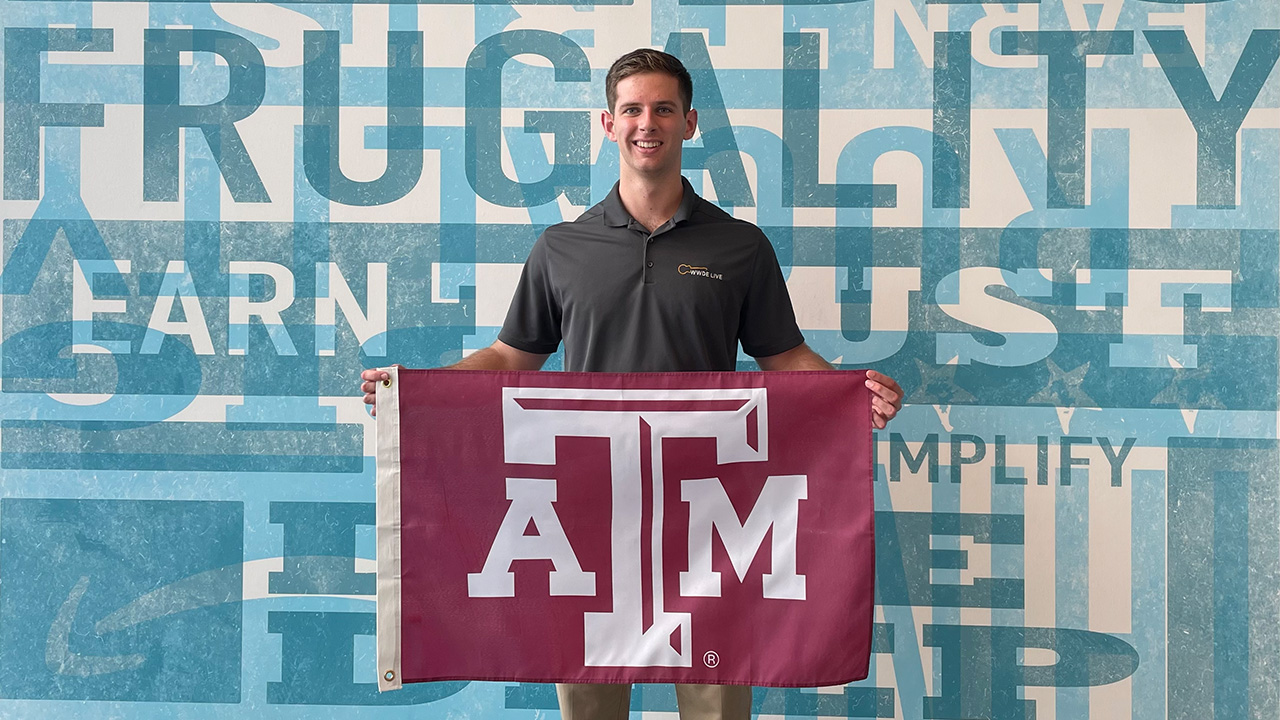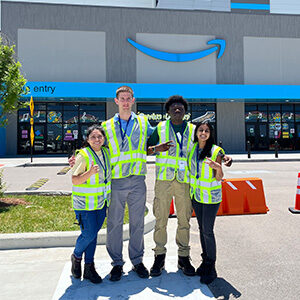LOOKING FOR AN INTERNSHIP?
Visit the Engineering Career Center to talk with a career advisor about resumes, interview preparation, the internship search process and more!

Many students contact Ingenium to ask bloggers about their internship experiences. The following Q&A is one blogger’s way of providing answers.
Q: What was a day in your life like for your internship?
Austin: I was a part of the retrofit team responsible for implementing upgrades into already existing Amazon fulfillment centers. We handled a bit of everything, since we were responsible for retrofitting all types of buildings. My project specifically focused on justifying the business case for an automated conveyance system in a unique Amazon building. I used AutoDesk 2D CAD to create the process flow and conceptual design for the system. The majority of my time during the internship was spent in meetings, whether reviewing priorities with leadership, checking in with my mentor or addressing specific problems as a group. Writing technical papers was the next largest task, as my project deliverable was a technical paper to director level leadership. I also spent a good amount of time learning and using AutoDesk to create 2D layouts of conveyor systems. One of the most exciting parts was taking business trips to tour Amazon fulfillment centers. It was eye opening, seeing the behind-the-scenes of how your packages get to your door.
Q: What surprised you the most about Amazon’s culture?
Austin: To me what stands out about Amazon is its leadership principles (LPs). Look up anything online about interviewing for Amazon and this will be the first thing that appears. Unlike other companies who halfheartedly preach core values, Amazon truly lives off their LPs: they are used in daily conversation, and a self-evaluation of how you exhibit LPs is the pathway to promotion. For me, two LPs specifically stood out during my time with Amazon because they were the ones I grew the most in during my internship: Bias for Action and Customer Obsession.
Bias for Action recognizes that speed matters in business, and there are few companies that are as fast as Amazon. However, this leadership principle doesn’t say to go fast, but rather to have a tendency for action over hesitancy. We live in a world where there is imperfect knowledge, limited resources and decisions that must be made. I don’t want to make decisions based on assumptions, but sometimes this is necessary because obtaining more accurate information is impossible or not worth the resources. Thus, Bias for Action challenges leaders to take opportunities they believe will be worthwhile, even despite failure. More than just a good business strategy, Bias for Action is also a good principle in life. Having a tendency for action over passivity has allowed me to make bold decisions that I would have otherwise been too afraid to pursue. The benefits I have reaped reiterated the importance of this principle, and the failures made me appreciate having taken the risk over doing nothing at all.
At Amazon, Customer Obsession means starting with the customer’s situation and then working backward to determine the solution. Earning customer trust is also essential and, although it is good to pay attention to competitors, it is better to obsess over customers. Customers are often dissatisfied, and you can always do more for them. If you think you cannot do more, you probably haven’t thought hard enough. (You can now see why it is an obsession.)

For my team, we serve internal customers: we support fellow Amazonians who are on the front lines delivering packages to the external customers. My biggest customer obsession “Aha!” moment came when the team I supported switched to using Slack as their ideal communication app. For a while, I said I did not have and could not be reached using Slack. Then it finally occurred to me: why don’t I just get Slack since my customer prefers to communicate in that way. BOOM! Customer obsession! Although a seemingly minor example, the little actions done to improve the customer experience pay long-term dividends.
Q: What was your biggest one line takeaway from this internship?
Austin: Know your value, and do not be afraid to stand your ground in a room full of smart people.

Industrial Engineering, Class of 2023
If you found this blog post interesting, you may consider reading “3 steps to land an internship” and “How I broke into an industry I knew nothing about.”
